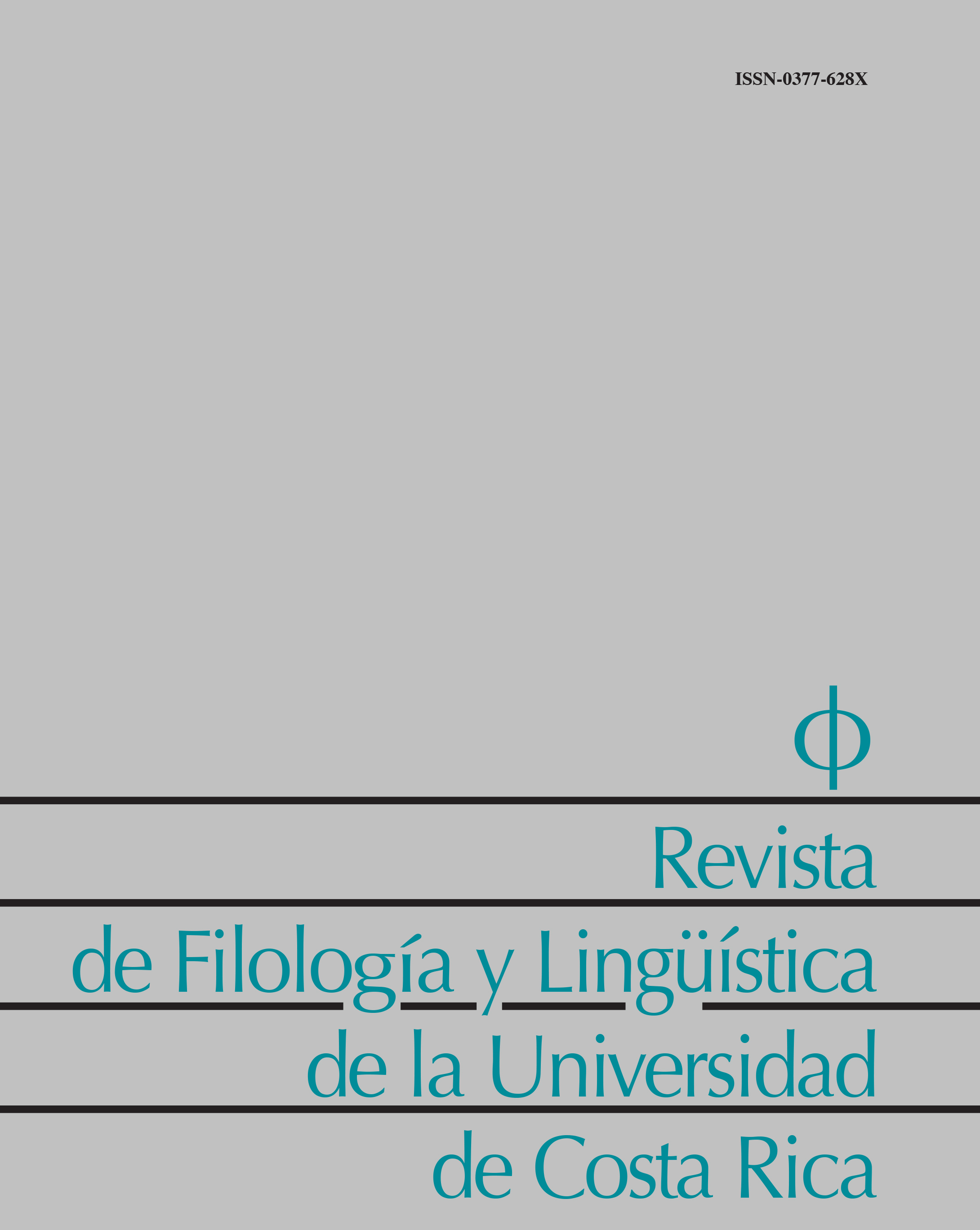Abstract
The motif of the falling leaves has a double meaning in Western literature: meta-literary and affective-existential. The purpose of this article is to present an analytical and interpretative overview of the different variants, linguistic formulas, and meanings that the lyrical affective-existential function of this motif went through in twentieth-century Latin American poetry, particularly during the Postmodernismo and Vanguardias, until the semantic variations that it acquired in the second half of the twentieth-century and the beginning of the twenty-first. The explicit intention of the Vanguardias was to reject the literary tradition, in particular, the legacy of subjectivity of Romanticism, during which the topos of the falling leaves was one of its highest expressions. Its semantic core, we argue, expresses the end of a loving relationship (during Romanticism and Post-romanticism) or a life (in the twentieth-century), and it is depicted, mainly, in narrative poems.
References
Álvarez Cienfuegos, N. (1987). El fin del otoño. En R. Andrés (Ed.). Antología poética del Romanticismo español. (pp.15-17). Barcelona: Planeta.
Aston, W. G. (1916). A History of Japanese Literature. New York: D. Appleton and Company.
Bécquer, G. A. (2001). Rimas y leyendas. Madrid: Espasa-Calpe.
Böhl de Faber, J. N. (Ed.). (1827). Primera parte de la floresta de Rimas antiguas castellanas (2ª ed). Hamburgo: Federico Perthes.
Campos, M. A. (Ed.). (2004). Poetas italianos del siglo XX. México: Universidad Autónoma de México.
Castro, R. (2016). Follas novas. Santiago de Compostela: Galaxia.
Curtius, E. R. (1955 [1948]). Literatura europea y Edad Media Latina. México: Fondo de Cultura Económica.
Cuvardic García, D. (2015). La función metapoética del tópico de ‘las hojas secas’ en la literatura occidental. En P. Calef y F. Estévez (Eds.). Hora fecunda. Scritti in onore Giancarlo Depretis. (pp. 409-421). Torino: Trauben.
Davis, L. G. (2002 [1997]). Resistirse a la novella. Novelas para resistir. Ideología y ficción. (R. García Pérez, Trad.). Barcelona: Debate.
Doane, M. A. (2012). La emergencia del tiempo cinemático. La modernidad, la contingencia y el archivo. Murcia: Cendeac.
González Iglesias, J.A. (2012). Introducción. En Horacio, Arte poética. (pp. 9-40). Madrid: Cátedra.
Guillén, C. (2005). Entre lo uno y lo diverso. Introducción a la literatura comparada. Barcelona: Tusquets.
Homero. (1991). Ilíada. (E. Crespo Güemes, tr.). Madrid: Gredos.
Horacio (Quinto Horacio Flaco). (2012). Arte poética. En J. A. González Iglesias (Ed.). Madrid: Cátedra.
Keats, J. (1989). Al otoño. En J. M. Valverde (tr.) Poetas románticos ingleses. Byron, Shelley, Keats, Coleridge, Wordsworth. (pp. 210-212) Barcelona: Planeta.
Lakoff, G. y Johnson, M. (1986). Metáforas de la vida cotidiana. Madrid: Cátedra.
Lamartine, A. (1841). El otoño. En J. M. de Berriozabal (tr.). Poesías. (pp. 131-133) Molins de Rey: Librería del Sr. Pablo Cases.
Loynaz, D. M. (1993). Poemas escogidos. En P. Simón (Comp.). Madrid: Visor.
Maples Arce, M. (1999). Y nada de hojas secas. En G. García Maroto (Ed.). Nueva antología de poetas mexicanos. (pp. 72-86). Madrid: Breve Fondo Editorial.
Morillo Sotomayor, A. (2006). Cuatro anudamientos de la escritura fronteriza: la poética cósmica de Jorge Eduardo Eielson. Tinta expresa, 2, 113-134.
Neruda, P. (1995). Veinte poemas de amor y una canción desesperada. Cien sonetos de amor. Barcelona: Altaya.
Novalis (1951). Enrique de Ofterdingen. Buenos Aires: Espasa Calpe.
Ota, S. (2014). José Juan Tablada. Su haikú y su japonismo. México: Fondo de Cultura Económica.
Paz Castillo, F. (1988). Poesía. Caracas: Biblioteca Ayacucho.
Pérez Parejo, R. (2002). Metapoesía y crítica del lenguaje (De la generación de los 50 a los novísimos). Cáceres: Servicio de Publicaciones de la Universidad de Extremadura.
Riesz, J. (1984). Falling leaves: some reflections on the nature and function of the image in lyric poetry. Yearbook of Comparative and General Literature, 33, 49-48.
Schiller, F. (1995). Sobre poesía ingenua y sentimental. Madrid: Visor.
Shulz, G. (2002). Universum und Blaue Blume: zum Gedenken an Novalis (1772-1881). Oldenburg: Bibliotheks und Informationssystem univ.
Souriau, E. (1998). Diccionario Akal de estética. Madrid: Akal.
Tablada, J. J. (1971). Hojas secas. En H. Valdés (Ed. y Comp.). Obras I. Poesía (La tarde). (p. 377) México: UNAM.
Tablada, J. J. (1971). Hotel. En H. Valdés (Ed. y Comp.). Obras I. Poesía (La tarde). (p. 377) México: UNAM.
Virgilio Marón, P. (1963). Geórgicas. México: UNAM.

